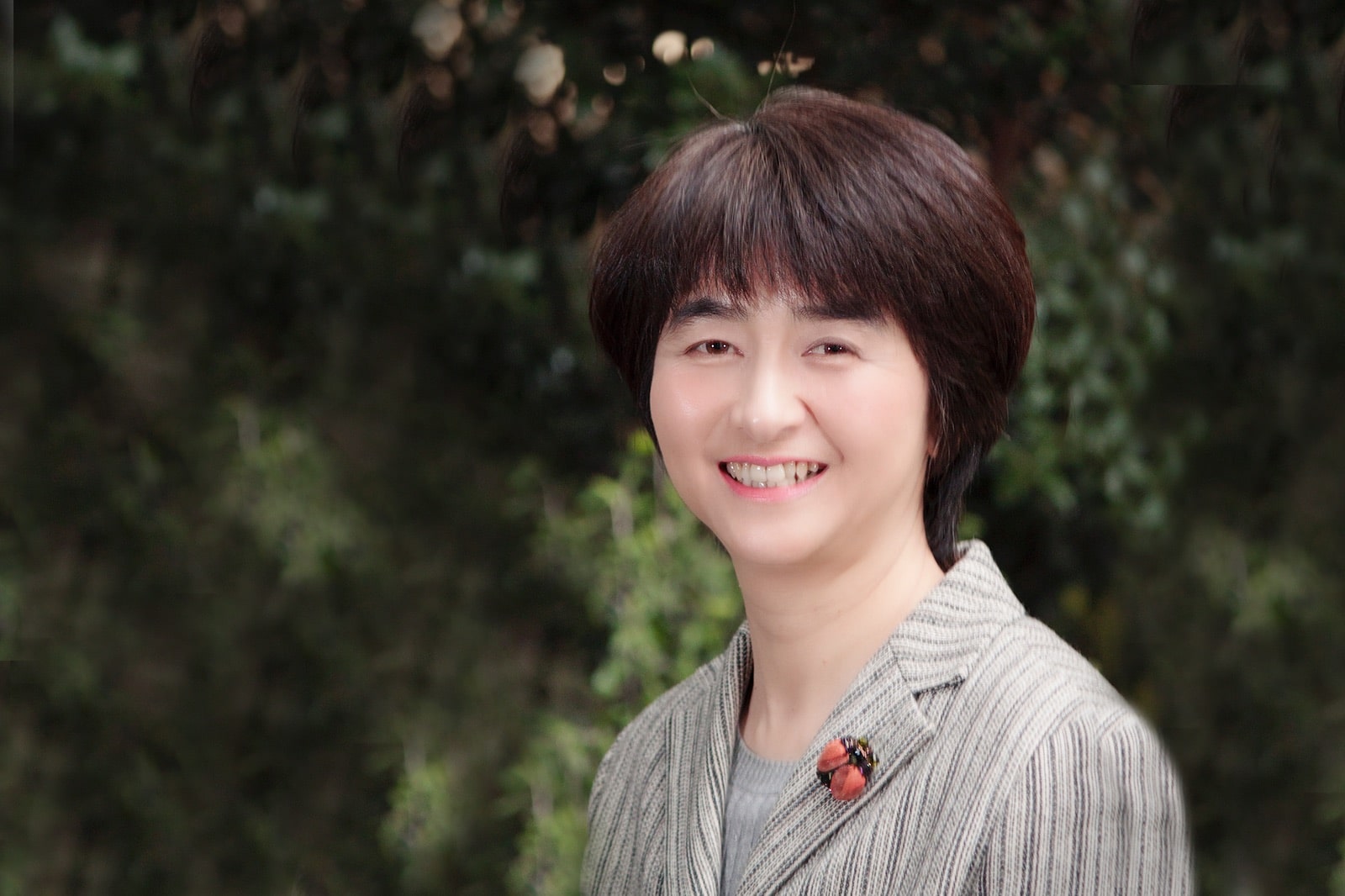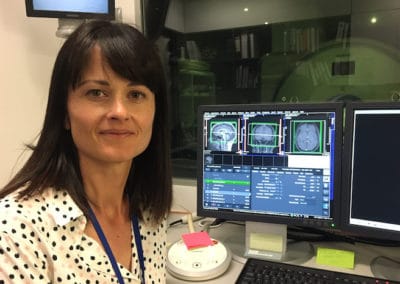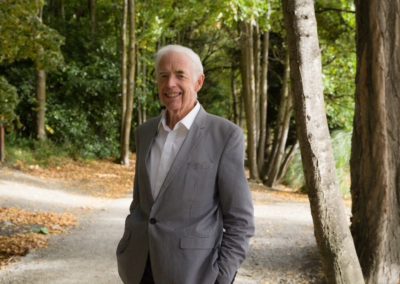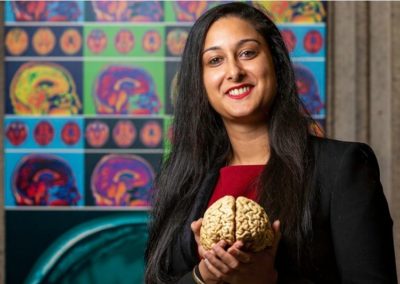When Assoc Prof Yiwen Zheng first dipped her toes in tinnitus research more than 16 years ago, she was drawn to it quickly because of two simple facts. First, tinnitus is a widespread condition. It affects 6% of New Zealanders and 13.5% of people over 65 years – and these numbers are likely to grow as our population ages. She also knew that there were no successful treatment options available to relieve symptoms and turn down the tinnitus sound. Yiwen took these sobering facts as a challenge and decided that she could make a real difference to this field.
Tinnitus is the perception of sound that is not physically present, often described as a ringing in the ears. It can be caused by ageing-related hearing loss, by being exposed to loud noise, or by other conditions such as ear infections or injuries. What fascinates Yiwen most about it, is that it is not merely an auditory condition: “Yes, it starts with the ear, but if you look further, you also see long-term changes in the brain.”
While her tinnitus research applies a range of approaches and methods, and investigates multiple areas, it always follows one of two main objectives, Yiwen says: “We try to understand how and why tinnitus is generated, and we want to find an effective treatment for it.”
A recently completed research project funded by Brain Research New Zealand (BRNZ) focuses on the inferior colliculus, a part of the midbrain that has been suggested to be involved in the generation and persistence of tinnitus. It is a highly integrative centre in the auditory pathway integrating both ascending and descending auditory inputs, such as auditory information from the ear, somatosensory input, and feedback from the cortex to the ear.
The project aimed to investigate if and how long-term changes in the inferior colliculus are involved in chronic tinnitus. Previous studies have shown that when inhibitory (or GABAergic) neurons are suppressed in the auditory pathways, other neurons become hyperactive and undergo long-term plasticity changes. These changes are known as long-term potentiation (LTP), a process of synaptic connections becoming stronger, or in simpler terms, the communication between neurons becoming more effective. Yiwen and her team tried to find out if LTP underlies the generation of the tinnitus sound.
The BRNZ grant allowed Yiwen to assemble a multidisciplinary team, each member bringing a unique set of skills to the collaboration: Prof John Reynolds is an electrophysiology expert, and Dr Owen Jones has vast knowledge about LTP induction and recording. Yiwen and Prof Paul Smith are vestibular and auditory neuroscientists focusing on tinnitus, who have extensive expertise using an animal model of tinnitus – which they also used in this project.
Yiwen had started to develop the model at the very beginning of her tinnitus research journey. Six years in the making, it is now internationally recognized as one of the most realistic animal models to represent tinnitus in humans, putting Yiwen’s and Paul’s lab at the forefront of global tinnitus research.
After confirming that the animals have tinnitus – a labour-intensive process using sophisticated behavioural tasks – the project team conducted electrophysiology experiments to measure long-term potentiation in the inferior colliculus.
They also tested a group of animals without tinnitus for comparison. In these animals, synaptic efficacy or LTP could only be enhanced by using a drug that reduced the activity of the GABAergic or inhibitory neurons. “In our tinnitus animals, however, we did not need that drug,” Yiwen explains. “They showed enhanced LTP already, which suggests that the acoustic trauma (that caused the tinnitus) also causes a decreased function of the GABAergic neurons.”
While the research team have completed this part of the project, they have already planned a second step – dependent on funding. They want to try to prevent LTP induction in the inferior colliculus and reduce tinnitus perception in animals through optogenetic stimulation (the use of light) of the GABAergic neurons. “This would help us understand, and hopefully, confirm, whether an increase of the GABAergic activity would reduce LTP – and in the long-term, the tinnitus,” Yiwen explains.
The results of the project are encouraging, but as Yiwen points out, they are one part of a bigger puzzle: “In the end, I don’t think a single target, drug or stimulation will be effective.” That is why she follows a range of approaches looking at tinnitus from different angles, such as metabolomics, deep brain stimulation, targeting multiple neuronal networks, sites and systems. “I suspect the most effective treatment for tinnitus will be a cocktail – either a cocktail of drugs aimed at different therapeutic targets, or a combination of stimulations and drugs.”
Tinnitus is a puzzle with many pieces, but researchers like Yiwen are putting it together, piece by piece.



